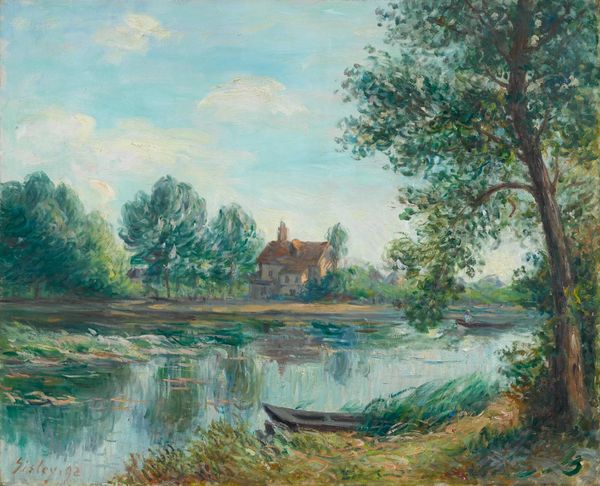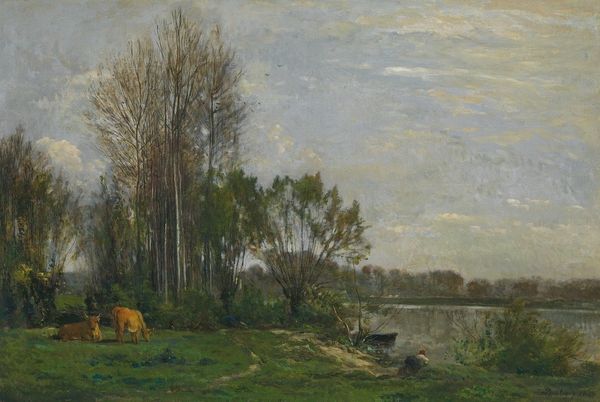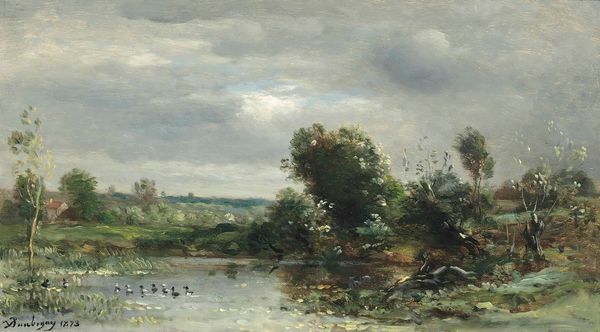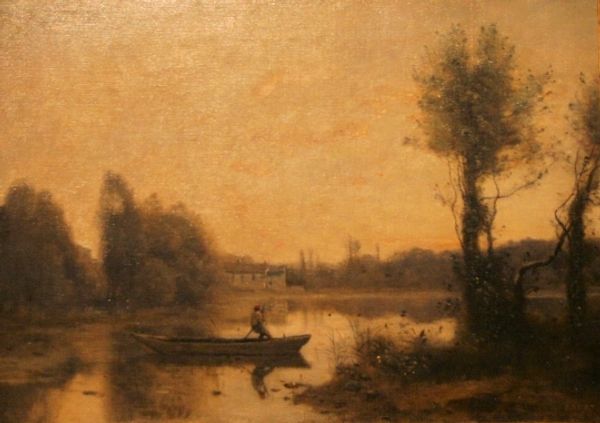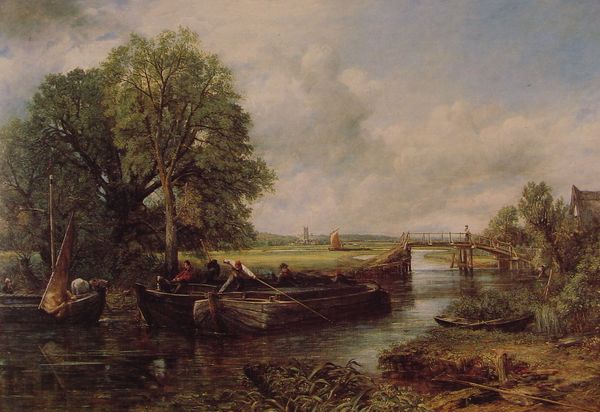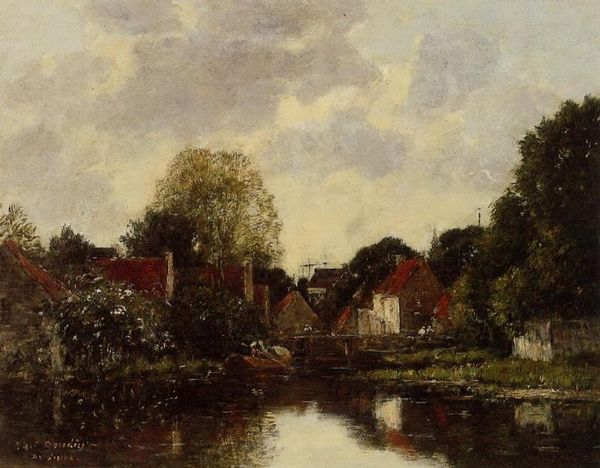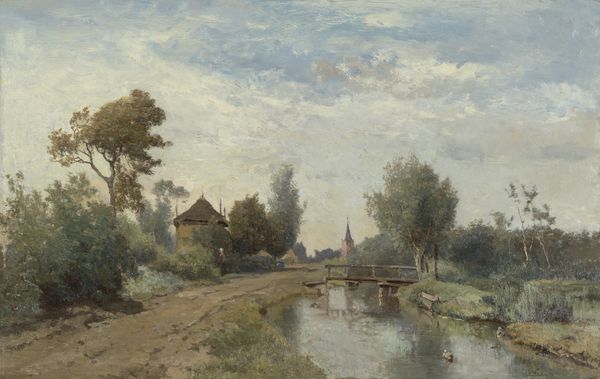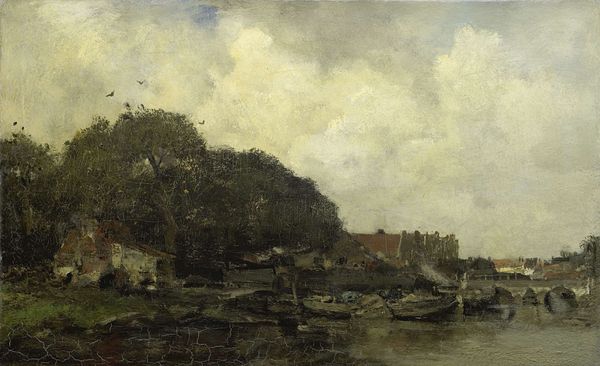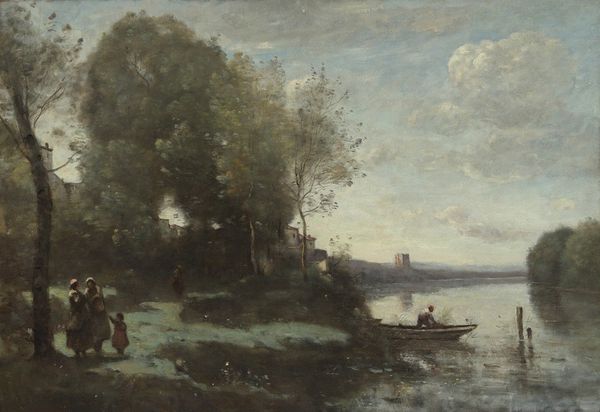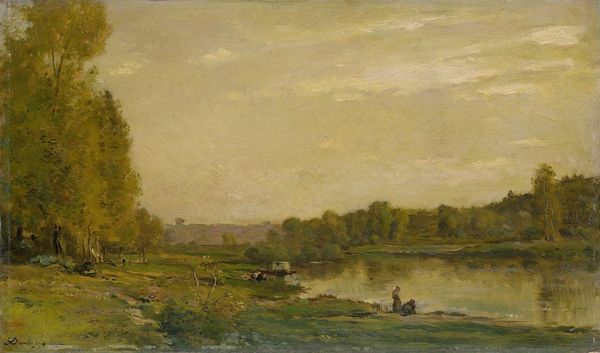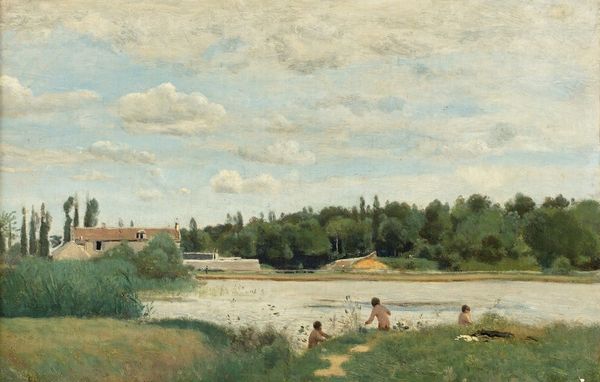
Environs De Mantes, Petites Habitations Cachées Dans Les Arbes Près Du Bord De L’eau
0:00
0:00
painting, plein-air, oil-paint
#
painting
#
impressionism
#
plein-air
#
oil-paint
#
landscape
#
oil painting
#
watercolor
#
realism
Copyright: Public Domain: Artvee
Curator: This is Camille Corot's oil painting, "Environs De Mantes, Petites Habitations Cachées Dans Les Arbes Près Du Bord De L’eau." I am drawn to how Corot, known for his plein-air style, captures this particular slice of the French countryside. Editor: My immediate impression is of tranquility, almost melancholy. The soft, muted tones evoke a stillness, a hushed intimacy between nature and human habitation. It reminds me of a fleeting dream. Curator: The image offers a commentary on class, I think. The little houses partially hidden—"cachées," as the title tells us—hint at those who are often overlooked or whose labor disappears from dominant narratives. It invites viewers to consider power and privilege in these spaces. Editor: Indeed. Looking at the symbols, the river can signify the passage of time, or perhaps, the boundary between the visible and invisible. The small boat with a figure represents humanity's humble presence amidst the grand scale of nature. I read it as the individual navigating the currents of existence. Curator: I agree the human element here is quite small and almost an afterthought. To me, that placement speaks to a relationship between individual identity and collective narratives of displacement in favor of "natural" grandeur and aesthetics. The buildings become like background features within the bigger stage. Editor: And that soft, muted light infuses everything. The symbols become unified within a singular tone, speaking to cycles of transformation and the ephemeral nature of both beauty and the struggles surrounding those in poverty. The light could signal hope as well. Curator: What this highlights is how land ownership dictates access. A painting such as this might be seemingly simple in presentation. Yet it opens broader social questions around those living nearby, unseen by the dominating elites. Editor: So, while superficially a gentle landscape, the painting evokes deep-seated ideas about temporality, navigation, and presence using very evocative and universal symbols, made relatable for us. Curator: For me, the painting becomes an exercise in seeing both what is readily visible and also what lies beneath or beyond the easily accessible narratives. It reminds me of art's potential to be not just aesthetic but also acutely political. Editor: Yes, indeed, the symbols, infused with nuanced social ideas, truly broaden my appreciation.
Comments
No comments
Be the first to comment and join the conversation on the ultimate creative platform.


